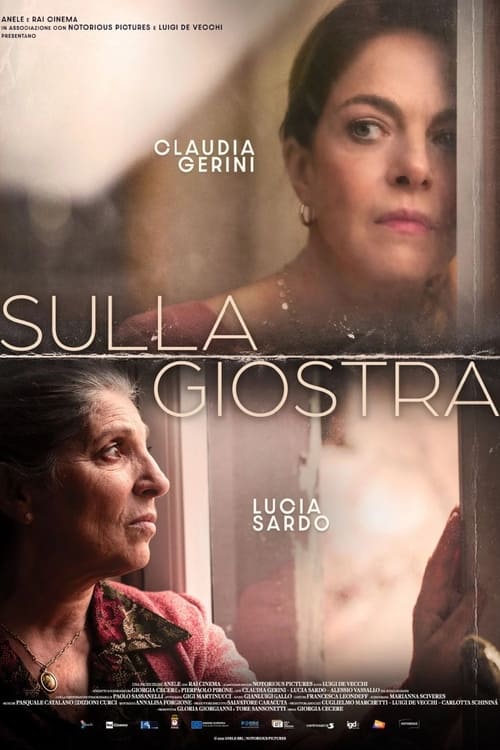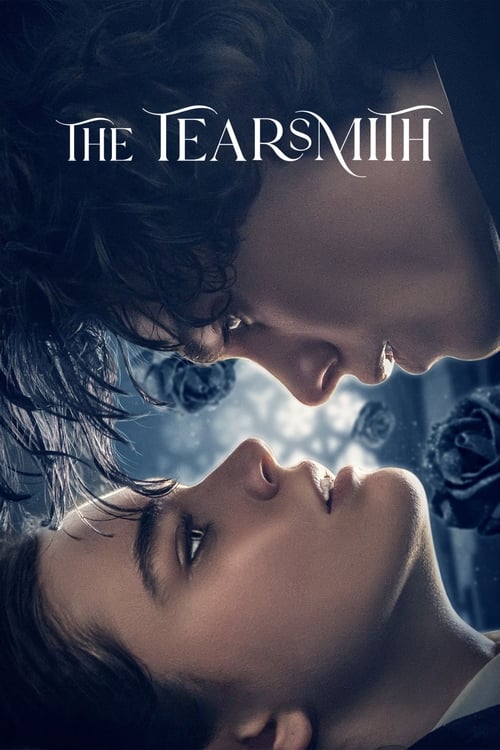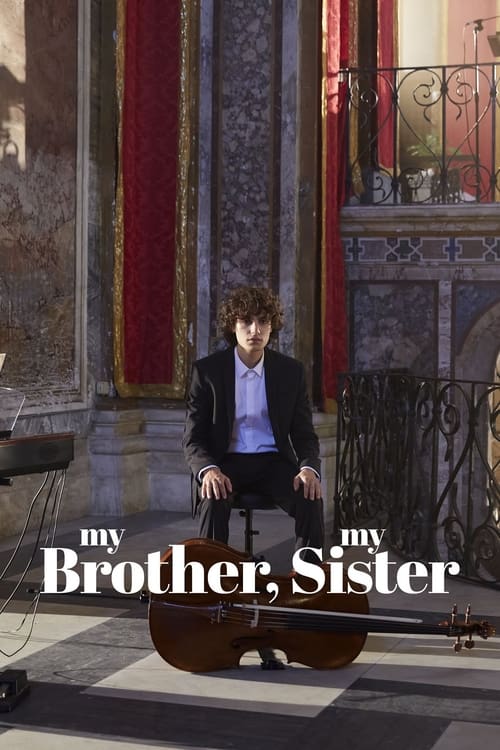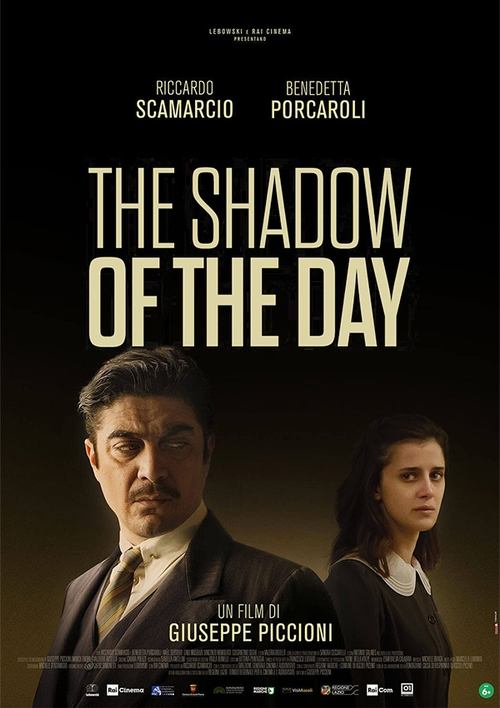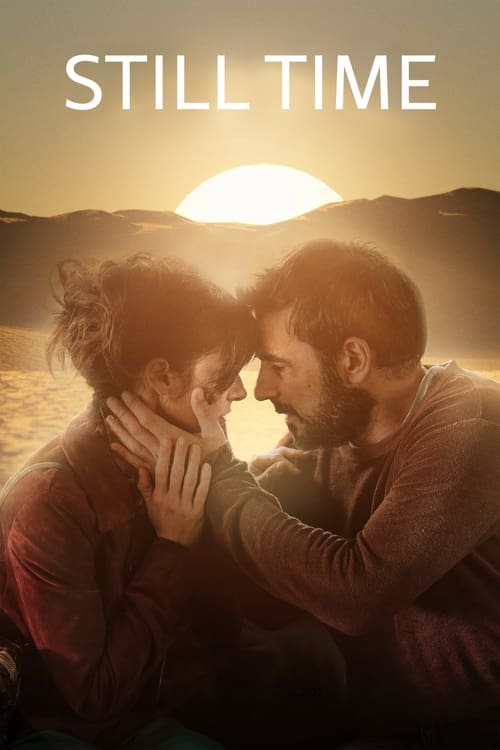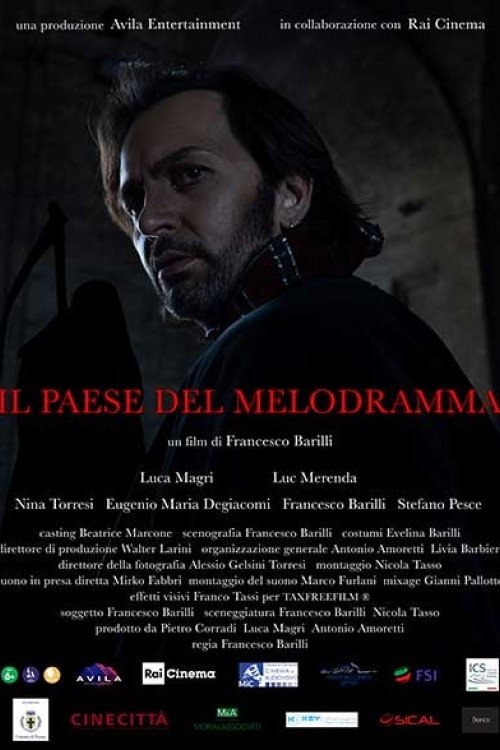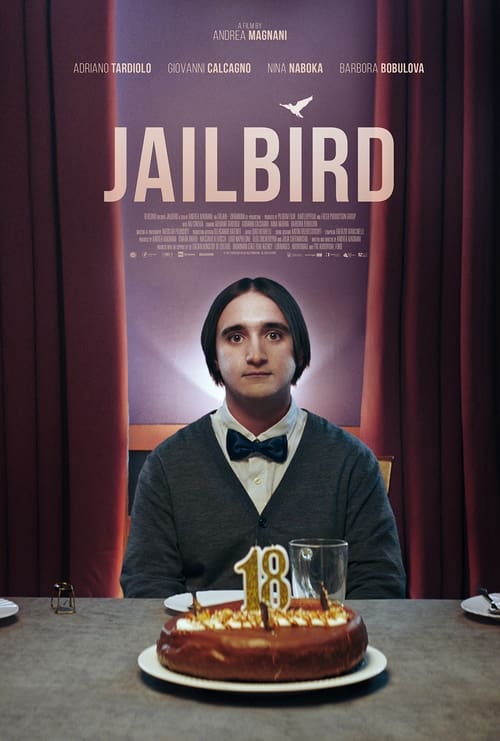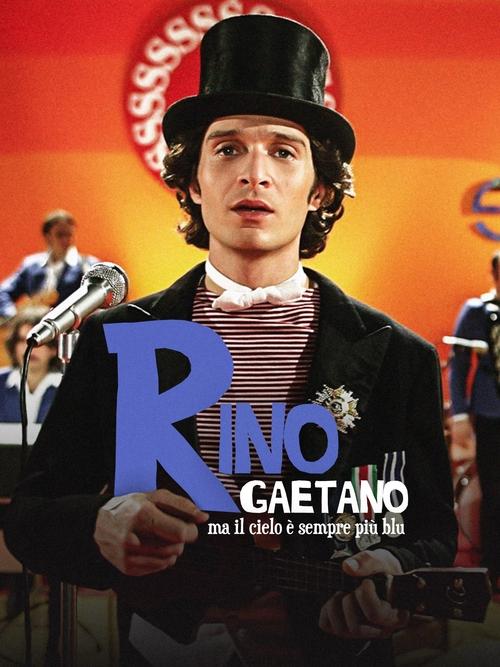
Ask Your Own Question
What is the plot?
The film Sulla giostra (2021) opens with Irene, a busy professional woman played by Claudia Gerini, returning from her life in Rome to her childhood home in Salento, southern Italy. Irene is separated from her ex-husband Filippo (Paolo Sassanelli) and has a teenage son named Davide (Edoardo Di Lernia). The date and exact time of her arrival are not specified, but the atmosphere is suffused with a sense of impending change and unresolved family tension. Irene's purpose is clear: she wants to convince her elderly mother Ada (Lucia Sardo), who has long served as the housekeeper of the family's elegant old villa, to move out so the property can be sold. Irene sees this as a practical step to gain her share of the money and move forward with her life.
Ada, however, is deeply attached to the villa. The house is not just a building but a repository of family memories, identity, and heritage. Ada's connection to the villa is palpable--she has meticulously maintained it over the years, preparing rooms and even adding places at the table, symbolizing her enduring hospitality and the continuity of family life. The villa, set in the lush landscape of Salento, becomes the central stage where the emotional and generational conflict between mother and daughter unfolds.
From the outset, the tension between Irene and Ada is sharp and charged. Irene's pragmatic, goal-oriented attitude clashes with Ada's rootedness and emotional attachment. Their dialogue is intimate yet biting, revealing layers of resentment and unspoken history. At one point, Ada tells Irene pointedly, "We can see you're alone," a remark that pierces through Irene's polished professional facade and hints at her personal struggles and loneliness.
Irene expects to resolve the matter quickly, confident she can persuade Ada to leave the villa within a couple of days. However, the dispute proves far more complex and demanding than she anticipated. Ada's steadfast refusal to relinquish the house forces Irene to confront not only her mother's determination but also her own unresolved feelings about family, identity, and the past.
Throughout the film, the villa itself acts almost like a character--its rooms, corridors, and the table where Ada sets places for guests symbolize the layers of history and emotional ties that bind the family. The house witnesses visits from potential buyers, which bring external pressure and highlight the practical stakes involved. Irene's attempts to push the sale forward are repeatedly thwarted by Ada's quiet sabotage and unexpected arrivals of friends and relatives, whom Ada welcomes with open arms, further complicating Irene's plans.
The film's emotional core lies in the evolving relationship between Irene and Ada. Their confrontations, though often tense and fraught with frustration, gradually reveal a deep familiarity and trust that has endured despite years of distance. Irene's journey becomes one of self-discovery and acceptance. Through her clashes with Ada, she learns to embrace the unpredictability of life--the "merry-go-round" metaphor that Ada embodies by constantly preparing the house for new arrivals and changes.
Irene's transformation is subtle but profound. She moves from a rigid, control-focused mindset to one of openness and resilience, learning to "hop on the merry-go-round" of life and accept its twists and turns with a smile. This emotional growth culminates in the film's climax, where the dispute over the villa remains unresolved in a traditional sense but leads to a bittersweet reconciliation between mother and daughter.
Notably, Sulla giostra contains no deaths or physical violence. The conflicts are emotional and interpersonal, centered on dialogue and character interaction rather than dramatic plot twists or tragedies. The film's resolution emphasizes acceptance and personal growth rather than clear-cut victories or losses.
In the final scenes, Irene and Ada reach a new understanding. Irene, having confronted her own vulnerabilities and the complexity of her mother's attachment to the villa, emerges stronger, more sensitive, and more independent. The villa remains a symbol of family legacy and memory, and while its fate is left somewhat open, the emotional journey of the characters brings a sense of closure and hope.
The film closes on a note of quiet reflection and reconciliation. Irene's acceptance of the "merry-go-round" metaphor signals her readiness to embrace life's uncertainties, carrying forward the legacy of the villa and the family in a way that honors both past and future. The camera lingers on the villa's sunlit rooms and the table set for many, underscoring the themes of continuity, hospitality, and the enduring bonds of family.
Thus, Sulla giostra tells a deeply human story of generational conflict, family legacy, and personal growth, set against the evocative backdrop of a Salento country villa. It is a film about learning to let go of rigid control, embracing life's changes, and finding strength in vulnerability and connection.
What is the ending?
In the ending of "Sulla giostra," the main character, a young boy named Giovanni, confronts the reality of his family's struggles and the impact of his father's decisions. The film concludes with a poignant moment of acceptance and understanding as Giovanni finds a way to reconcile his feelings towards his father and their shared past.
As the final scenes unfold, Giovanni stands at the edge of the carousel, a symbol of his childhood and the innocence he is losing. He watches as the vibrant colors of the carousel spin around him, reflecting the chaos of his emotions. His father, who has been grappling with his own demons throughout the film, approaches Giovanni. There is a heavy silence between them, filled with unspoken words and unresolved tension.
In a moment of vulnerability, Giovanni's father opens up about his regrets and the choices that led them to this point. He expresses his desire to change and to be a better father, but Giovanni, still hurt and confused, struggles to fully embrace this new side of his father. The carousel continues to turn, a metaphor for the passage of time and the cyclical nature of their relationship.
As the film draws to a close, Giovanni takes a deep breath and steps forward, reaching out to his father. This gesture signifies a tentative step towards forgiveness and understanding. The camera captures their faces, revealing a mix of hope and uncertainty. The scene fades out with the sound of the carousel, leaving the audience with a sense of unresolved tension but also a glimmer of possibility for healing.
In the final moments, the film emphasizes the importance of family, the complexity of relationships, and the journey towards acceptance. Giovanni's fate is one of growth, as he learns to navigate his feelings and the realities of his life, while his father's fate remains uncertain, hinting at the ongoing struggle for redemption.
As the film "Sulla giostra" approaches its conclusion, the atmosphere is thick with emotion. The camera pans over the vibrant carousel, its colors swirling in a dizzying display, a stark contrast to the somber mood that envelops Giovanni. He stands at the edge, his small frame dwarfed by the towering structure, symbolizing the weight of his family's struggles pressing down on him.
Scene by scene, the tension builds. Giovanni's father, a man burdened by his past mistakes, approaches him with a hesitant demeanor. The air is heavy with unspoken words, and the carousel's music plays softly in the background, a haunting reminder of the innocence that is slipping away. Giovanni's eyes reflect a mixture of anger and longing, a child caught between the desire for a father and the pain of betrayal.
In this pivotal moment, Giovanni's father takes a deep breath, his voice trembling as he begins to share his regrets. He speaks of the choices that led to their current situation, the weight of his failures evident in his posture. Giovanni listens, his heart racing, torn between the urge to lash out and the yearning for connection. The camera captures the flicker of hope in his father's eyes, a man desperate to change, yet aware of the damage he has caused.
As the conversation unfolds, Giovanni's internal conflict becomes palpable. He grapples with the memories of happier times, the laughter they once shared, and the stark reality of their fractured relationship. The carousel spins behind them, a metaphor for the passage of time and the cyclical nature of their struggles. Giovanni's father reaches out, his hand trembling, seeking forgiveness, but Giovanni hesitates, caught in a whirlwind of emotions.
In a moment of clarity, Giovanni steps forward, his small hand reaching out to his father. This gesture is tentative yet powerful, symbolizing a willingness to bridge the chasm that has formed between them. The camera zooms in on their faces, capturing the raw vulnerability of the moment. Giovanni's eyes glisten with unshed tears, reflecting both pain and the flicker of hope for reconciliation.
As the scene unfolds, the carousel continues to turn, its music rising and falling like the ebb and flow of their emotions. Giovanni's father, still grappling with his own demons, watches his son with a mixture of pride and sorrow. The weight of their shared history hangs in the air, but in this moment, there is a glimmer of possibility for healing.
The film concludes with a lingering shot of Giovanni and his father standing together, the carousel spinning behind them, a symbol of the journey they have yet to embark on. The sound of the carousel fades, leaving the audience with a sense of unresolved tension but also a profound understanding of the complexities of family and the possibility of redemption.
In the end, Giovanni's fate is one of growth and resilience, as he learns to navigate the complexities of his emotions and the realities of his life. His father's fate remains uncertain, a reflection of the ongoing struggle for redemption and the hope that one day, they may find their way back to each other. The film closes on a note of ambiguity, inviting the audience to reflect on the intricacies of relationships and the enduring power of forgiveness.
Is there a post-credit scene?
In the movie "Sulla giostra," there is no post-credit scene. The film concludes its narrative without any additional scenes after the credits roll, leaving the audience with the emotional weight of the story and the characters' journeys. The focus remains on the themes explored throughout the film, rather than extending the narrative further in a post-credit sequence.
What motivates the main character, Marco, to return to his hometown?
Marco returns to his hometown driven by a mix of nostalgia and unresolved issues from his past. He feels a deep connection to the memories of his childhood, particularly the carousel that symbolizes both joy and the complexities of his family relationships. His internal struggle is fueled by a desire to confront his past and seek closure.
How does the relationship between Marco and his estranged father evolve throughout the film?
Initially, Marco's relationship with his father is strained, marked by years of silence and resentment. As the story unfolds, they are forced to confront their shared history during a series of emotionally charged encounters. Marco's father reveals his own regrets, leading to moments of vulnerability that gradually mend their bond, showcasing the complexities of familial love.
What role does the carousel play in the development of the story?
The carousel serves as a central symbol in the film, representing the cyclical nature of life and the passage of time. It is a physical manifestation of Marco's childhood memories and the innocence he longs to reclaim. As Marco interacts with the carousel, it triggers flashbacks that reveal pivotal moments in his life, ultimately guiding him toward self-discovery and acceptance.
How does the character of Elena influence Marco's journey?
Elena, a childhood friend, becomes a pivotal figure in Marco's journey of self-discovery. Her presence evokes feelings of nostalgia and longing, as she embodies the life Marco could have had. Through their interactions, Elena challenges Marco to confront his fears and regrets, ultimately encouraging him to embrace change and seek a new path forward.
What are the key conflicts that Marco faces upon his return to the town?
Upon returning, Marco faces several key conflicts, including his unresolved feelings towards his father, the haunting memories of his childhood, and the challenge of reintegrating into a community that has moved on without him. These conflicts manifest in both external confrontations with townspeople and internal struggles as he grapples with his identity and the choices he has made.
Is this family friendly?
"Sulla giostra," produced in 2021, is a film that delves into complex emotional themes and family dynamics. While it may not be overtly graphic, there are several aspects that could be considered potentially objectionable or upsetting for children or sensitive viewers.
-
Emotional Turmoil: The film explores deep emotional struggles, including themes of loss, grief, and familial conflict, which may be intense for younger audiences.
-
Family Conflict: There are scenes depicting arguments and tension between family members, which could be distressing for children who may not fully understand the dynamics of adult relationships.
-
Mental Health Themes: The film touches on issues related to mental health, including anxiety and depression, which may be challenging for sensitive viewers.
-
Loss and Mourning: The narrative includes elements of mourning and the impact of loss on family members, which could evoke strong emotions.
-
Visual Symbolism: Some scenes may use visual metaphors that could be confusing or unsettling for younger viewers, as they may not grasp the underlying meanings.
Overall, while "Sulla giostra" is not explicitly violent or graphic, its emotional depth and mature themes may make it more suitable for older teens and adults rather than younger children.

